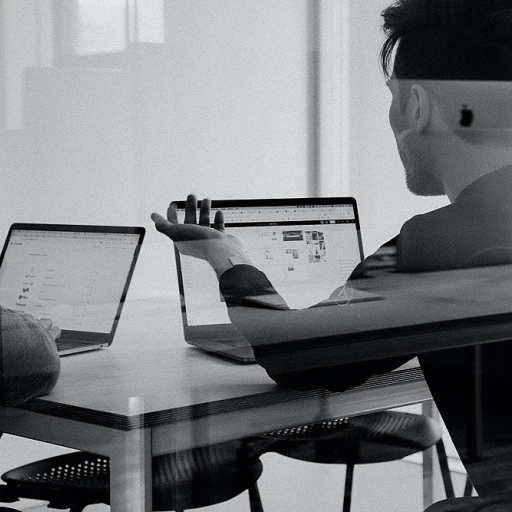
The Purpose of Employee Monitoring Software
Why Implementing Employee Monitoring Software Matters
In today’s digital workplace, employee monitoring software has become an integral part of business operations. Employers are increasingly turning to these systems to better understand work habits, enhance productivity, and safeguard company assets. But what is the true purpose of using such software?
Primarily, monitoring software is deployed to track employee activity during work hours. This encompasses a range of activities from evaluating software usage to monitoring company-owned devices. These insights help businesses ensure that their resources are utilized efficiently and employees remain productive.
For employers, the software offers the advantage of obtaining objective data on workplace performance, enabling them to make informed decisions to optimize workflow and address issues promptly. When potential legal disputes arise, having a reliable record of activities can be crucial.
Beyond productivity, these systems play a vital role in safeguarding sensitive company data. Monitoring the use of personal devices and ensuring compliance with data privacy laws can mitigate risks associated with data breaches or misuse.
While some employees express concern over privacy invasion, the goal is to strike a balance between employer needs and employee privacy. Listening to employee feedback and establishing transparent policies, particularly regarding video surveillance and social media activity related to work, can contribute to a more trusting workplace.
Understanding employee consent and transparent communication are pivotal. Employers should clearly inform employees of the monitoring practices and ensure these align with legal standards, promoting a culture of trust and respect.
To delve deeper into understanding employer rights, it's important to further explore the responsibilities and rights both parties hold in the workplace.
Common Misconceptions About Employee Monitoring
Dispelling Myths Around Employee Monitoring
There are numerous misconceptions surrounding monitoring software, which can lead to confusion and misinformation for both employers and employees. It’s essential to clarify these misunderstandings to foster a more transparent workplace environment and promote informed decision-making regarding the use of employee monitoring systems.
One common misconception is that monitoring software is solely about keeping tabs on every move an employee makes. In reality, many businesses employ such software to enhance workflow efficiency and align with company goals rather than scrutinize personal aspects of an employee's routine. Often, the goal is to strike a balance between employee productivity and maintaining individual privacy.
Another myth is that monitoring equates to distrust between employers and their employees. While misuse of these systems can indeed lead to decreased morale and trust, when implemented correctly, they can foster improved communication, enable better resource allocation, and highlight areas where additional training might be necessary for employee growth.
There are also concerns regarding the legal and ethical implications of monitoring employees, particularly concerning personal devices. While companies often reserve the right to monitor activities on company-owned devices during work hours, it’s crucial to understand monitoring laws and ensure employee consent is obtained before implementing any monitoring systems.
Organizations must strive to create a transparent monitoring process by informing employees about the intended use of the software, how data will be collected, and the specific parameters of monitoring systems. Addressing the fears and concerns of employees through open dialogue can help solidify trust and cooperation, ultimately leading to a more effective implementation of workplace technologies.
Legal and Ethical Considerations
Legal and Ethical Frameworks: Navigating Employee Monitoring
Employee monitoring within any company is an intricate dance of balancing essential data collection with respecting employee rights. The legal landscape surrounding employee monitoring is a complex tapestry comprised of various national and regional laws, many of which are designed to safeguard employee privacy. As a result, it is critical that employers remain well-informed about pertinent regulations and ensure their monitoring practices align with these monitoring laws. Employers often face challenges in implementing monitoring software in a manner that complies with both legal and ethical standards. It is paramount to obtain explicit employee consent before installing any monitoring systems, which may involve video surveillance or tracking work hours via company-owned devices. This not only fortifies transparency between employers and employees but also cements trust within the workplace. To ethically monitor employees, employers need to transparently communicate their intentions and the specific data collected. Informing employees about what the monitoring encompasses will ensure everyone involved is on the same page, thus fostering an environment of mutual understanding. Due to the personal nature of employee work and communication—including interactions on social media or personal devices—careful consideration must be given to programs that could potentially infringe upon an individual's privacy. This exemplifies the delicate balance between ensuring adequate business oversight and respecting employee privacy, a concern that intertwines deeply with how such personal data is managed within monitoring systems. Companies must thoroughly review and often revise their policies to reflect these ethical practices, ensuring monitoring legal compliance while respecting personal boundaries. Conclusively, as we explore advancements in monitoring technologies, companies continue to thread this needle of legality and ethics, striving to fortify business integrity without compromising the personal privacy of their employees.Balancing Productivity and Privacy
Finding the Right Balance
Incorporating monitoring software into a workplace involves a careful balance between ensuring productivity and safeguarding employees' privacy. Companies often install monitoring systems to track how work hours are utilized and to increase efficiency. However, it’s important to remember that productivity shouldn't always overshadow personal privacy. Employers can collect a significant amount of data from devices and systems used during work. While these tools provide valuable insights into employee performance and company resources, it is essential to ensure personal data is not exploited. The intention behind monitoring employees should be clear and should align with legal and ethical standards. One way to maintain trust is to inform employees transparently about the monitoring methods being used, whether it be software that tracks keystrokes, video surveillance for security, or monitoring social media usage during work hours. Employees should be notified what is being monitored and why. Consent is another key factor in balancing the needs of the business with respect. Obtaining employee consent to monitor devices—be it company-owned or personal devices used for work—can prevent potential legal issues. Monitoring employee activities without their consent can infringe on rights and contradict various monitoring laws. Finally, businesses should focus on using monitoring information to foster a better work environment rather than only scrutinizing employees. This approach can help in building a supportive atmosphere where employees can perform optimally without feeling constantly watched. This balance is crucial not just for compliance but for cultivating a positive workplace culture.Technological Advancements in Monitoring Software
Technological Innovations Shaping Employee Monitoring
The landscape of employee monitoring is continuously evolving, driven by technological advancements that enhance capabilities and streamline operations for companies. Monitoring software, a key component of many business systems, is benefiting from ongoing developments in technology which in turn impacts both employers and employees. Several technologies have fundamentally altered how companies monitor their workforce:- Artificial Intelligence (AI) and Machine Learning: These tools enable monitoring systems to analyze large volumes of data more effectively and swiftly. They help identify patterns in work routines, monitor employee productivity, and even predict potential issues such as burnout or disengagement. AI-powered software can provide employers with insights without overly invasive methods, which is crucial in maintaining a balance between productivity and personal privacy.
- Cloud-Based Solutions: With the rise of cloud computing, monitoring data can now be stored and accessed from anywhere. This facilitates remote work arrangements and ensures all monitoring data is securely stored, allowing for seamless and efficient data management without overloading local resources.
- Integration with Personal and Company-Provided Devices: Modern monitoring systems are adept at tracking data across both employees' personal devices and company-owned hardware. As businesses increasingly rely on a blend of personal and workplace devices, it becomes vital for monitoring software to seamlessly capture relevant data without intruding on personal privacy.
- Video Surveillance Advancements: Improved video quality and analytics have made video surveillance more effective. These advancements allow companies to install monitoring systems that not only record but analyze video data in real-time, ensuring compliance with legal norms while also providing necessary security measures in the workplace.
Future Trends in Employee Monitoring
Anticipating the Evolution of Employee Monitoring
As businesses continue to evolve, so too does the landscape of employee monitoring software. Companies are increasingly looking for solutions that balance productivity with privacy, a theme we explored earlier. The future of employee monitoring will likely see a shift towards more sophisticated technologies and methodologies.
Integration of AI and Machine Learning
Artificial Intelligence (AI) and machine learning are set to revolutionize how companies monitor employees. These technologies can analyze vast amounts of data to provide insights into work patterns without being intrusive. AI-driven systems can help employers identify trends and predict potential issues, such as burnout or disengagement, before they become significant problems.
Enhanced Data Privacy and Security Measures
With growing concerns about data privacy, future monitoring systems will need to prioritize security. Businesses will have to ensure that any data collected is stored securely and that employees' personal information is protected. This aligns with legal and ethical considerations discussed previously, emphasizing the importance of transparency and employee consent.
Focus on Employee Well-being
The future of monitoring will not just be about tracking work hours or productivity. Companies are beginning to recognize the importance of employee well-being. Monitoring software may soon incorporate features that help maintain a healthy work-life balance, such as alerts for excessive screen time or reminders to take breaks, aligning with the goal of balancing productivity and privacy.
Remote Work and Hybrid Models
The rise of remote work has accelerated the need for adaptable monitoring systems. Future software solutions will likely be designed to support hybrid work environments, providing flexibility for employees using both company-owned and personal devices. This adaptability is crucial for maintaining productivity while respecting employee privacy in diverse work settings.
Regulatory Changes and Compliance
As monitoring technologies advance, so too will the laws governing their use. Companies will need to stay informed about monitoring laws to ensure compliance. This will involve keeping up-to-date with legal developments and adjusting practices accordingly to maintain ethical standards and avoid potential legal issues.
In conclusion, the future of employee monitoring is poised to become more sophisticated and employee-centric. By embracing technological advancements and prioritizing privacy, companies can create a more balanced and productive workplace.












